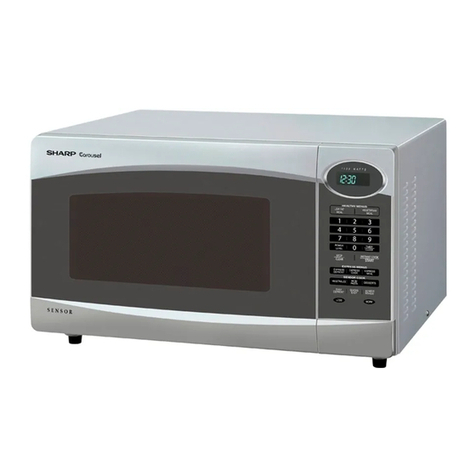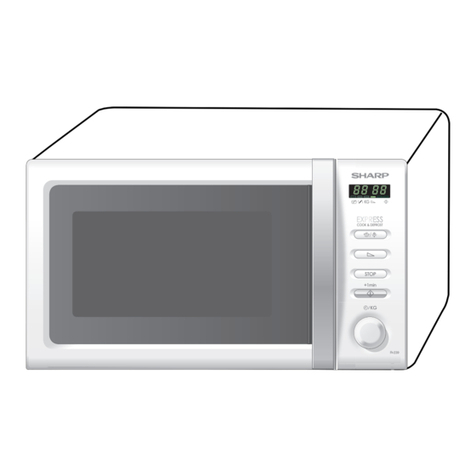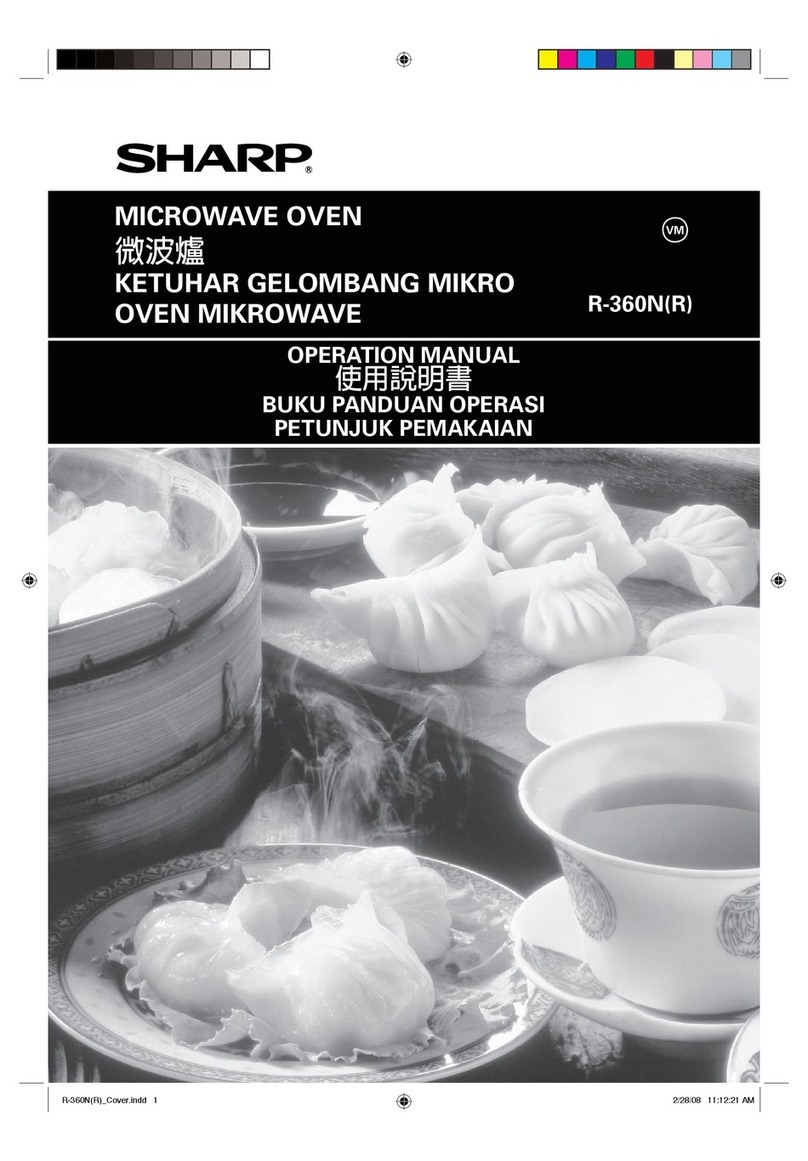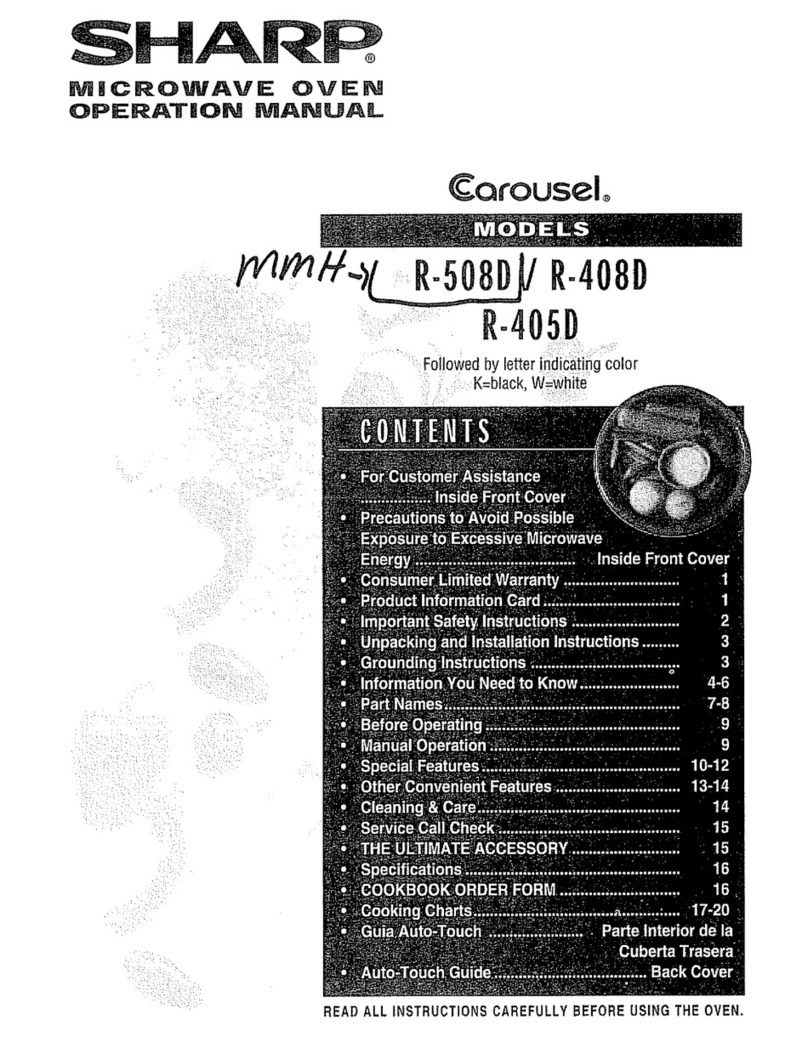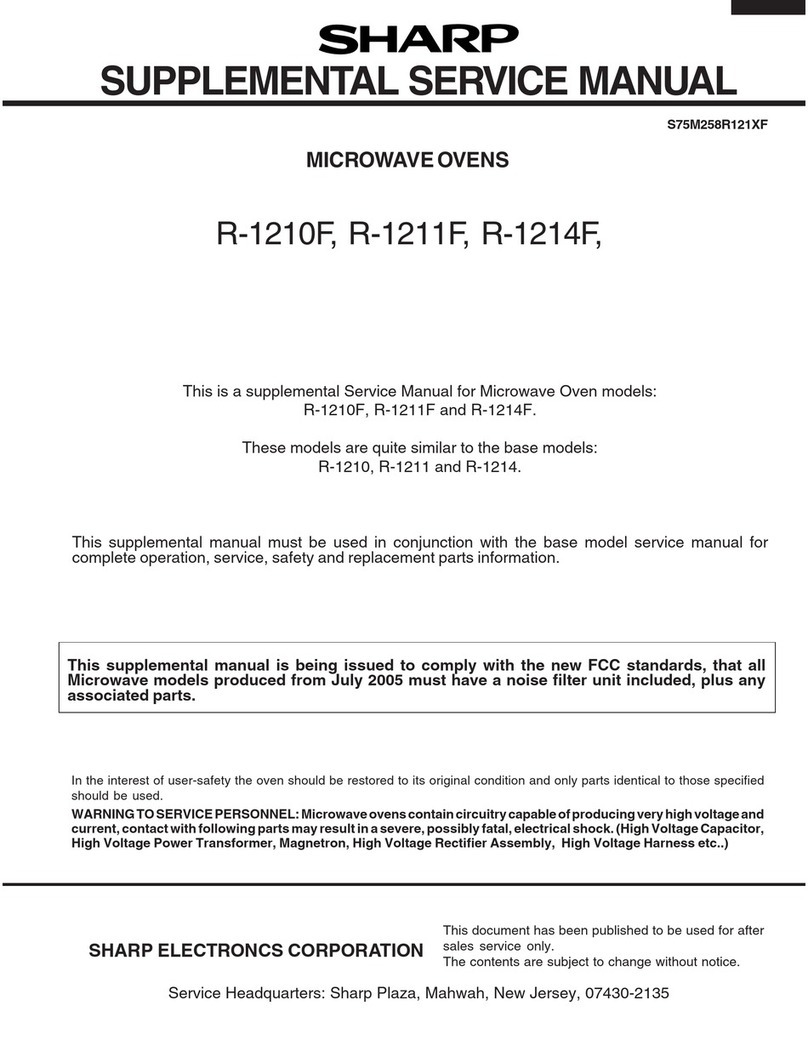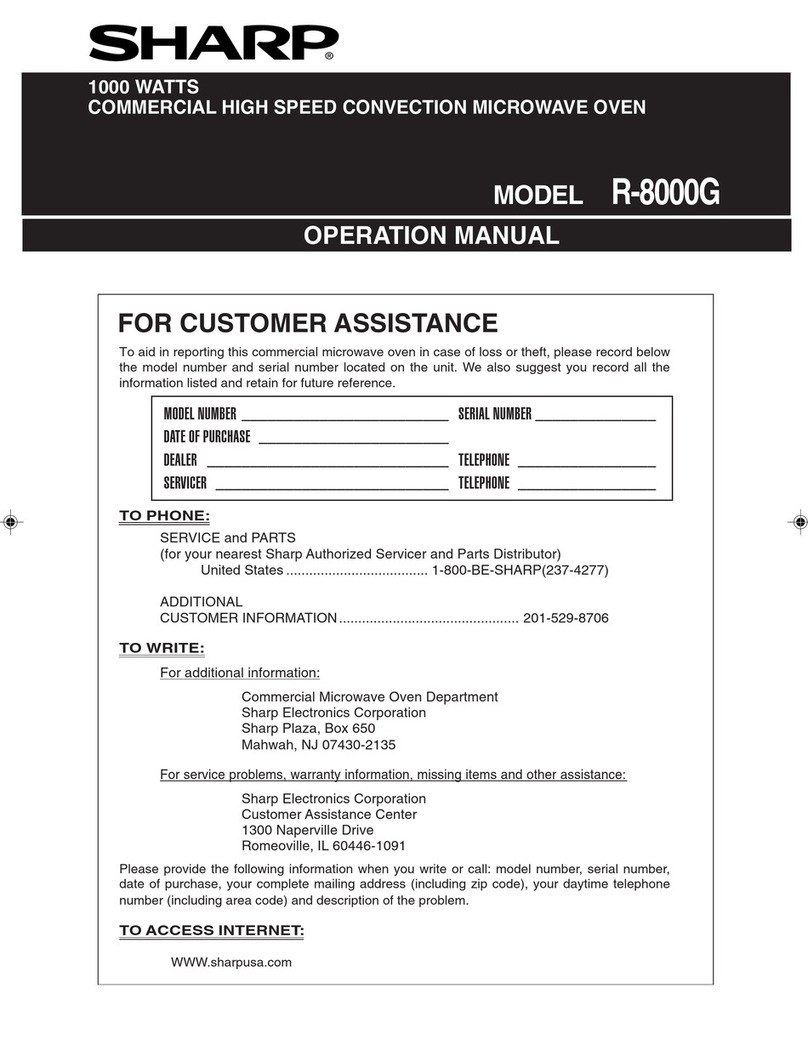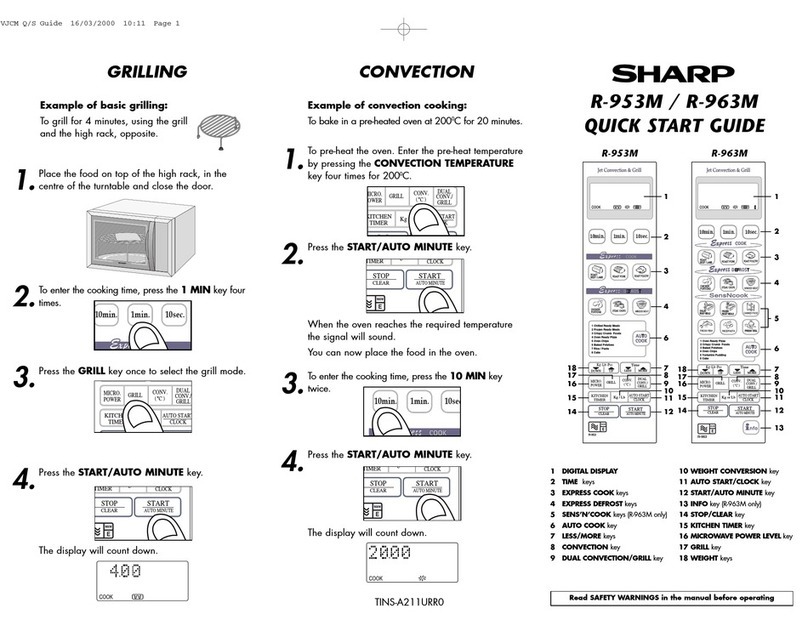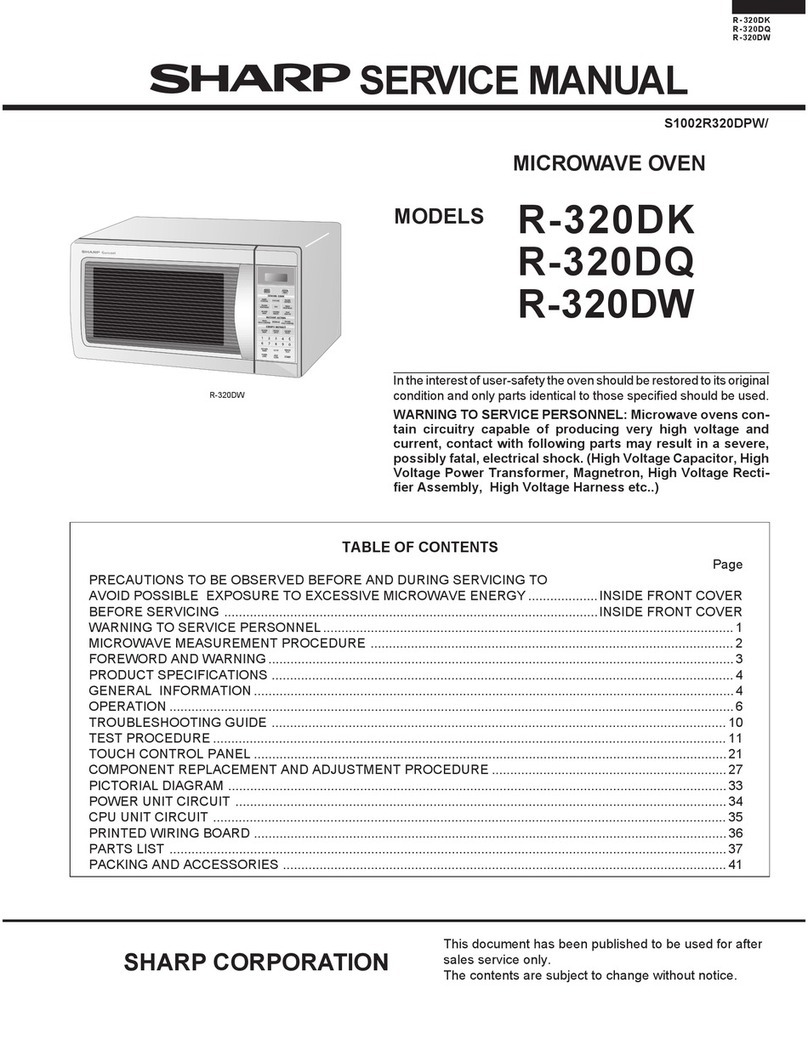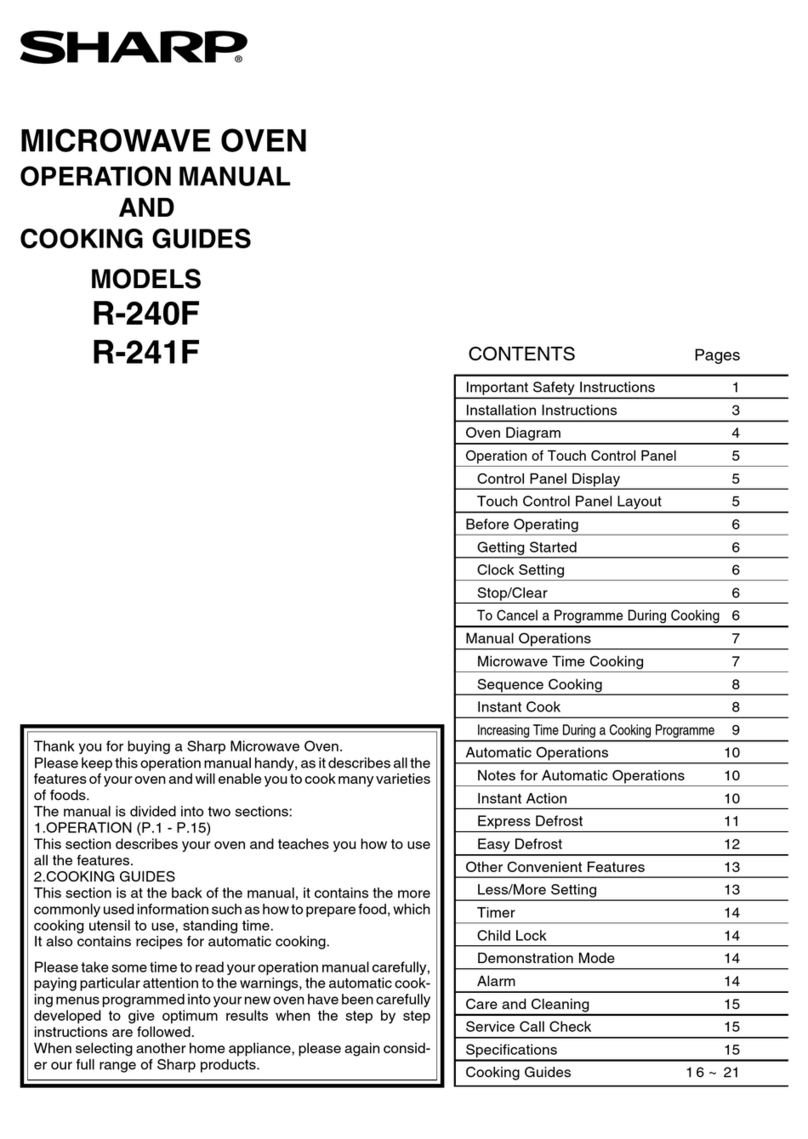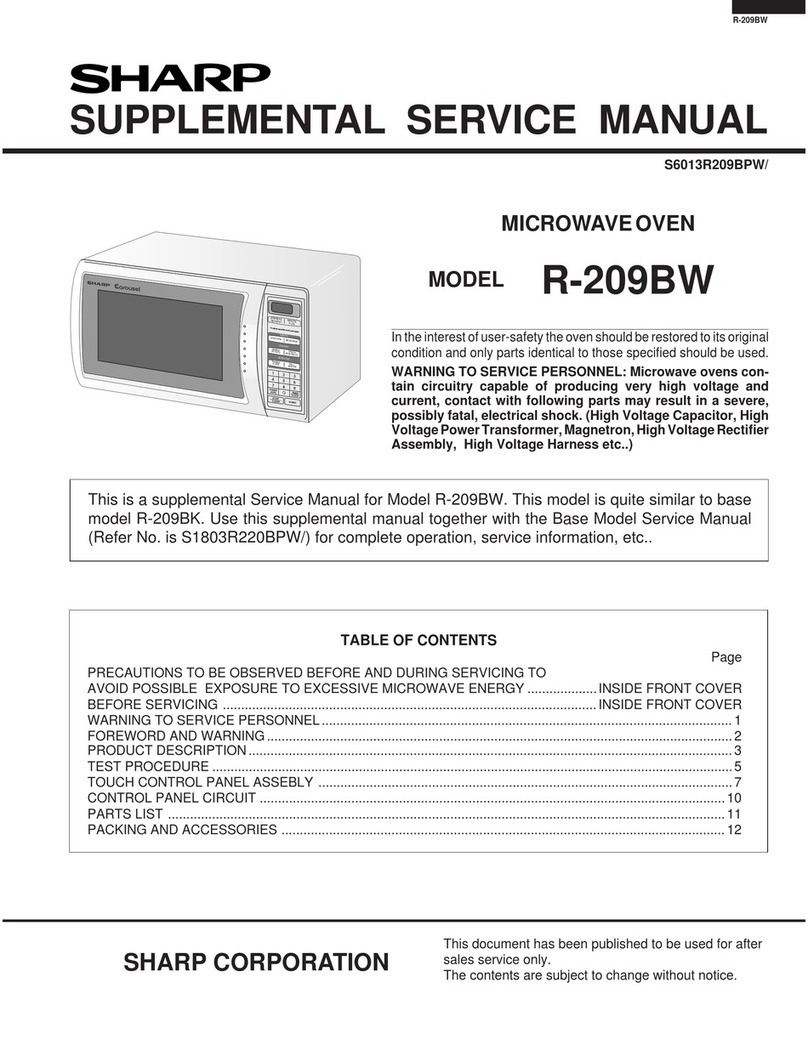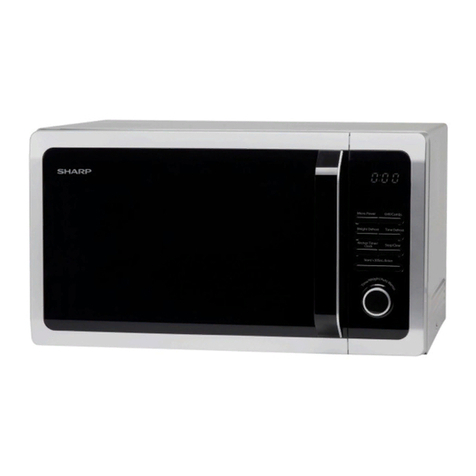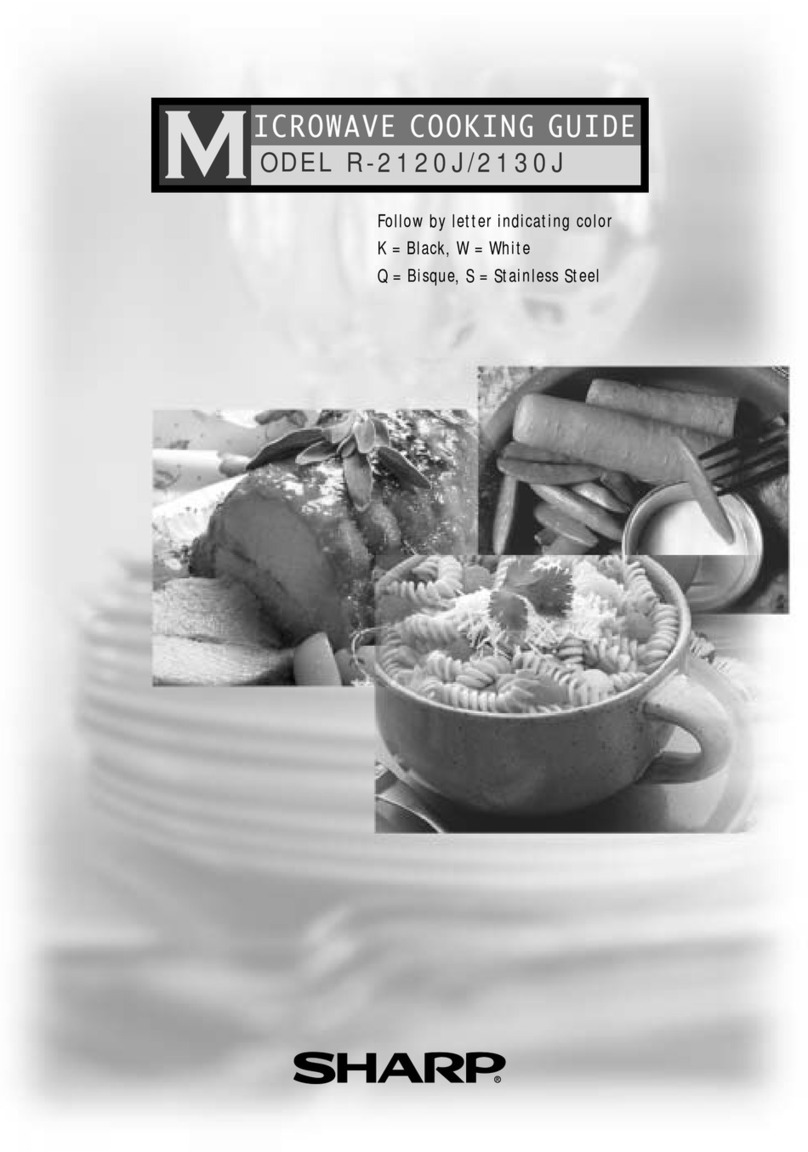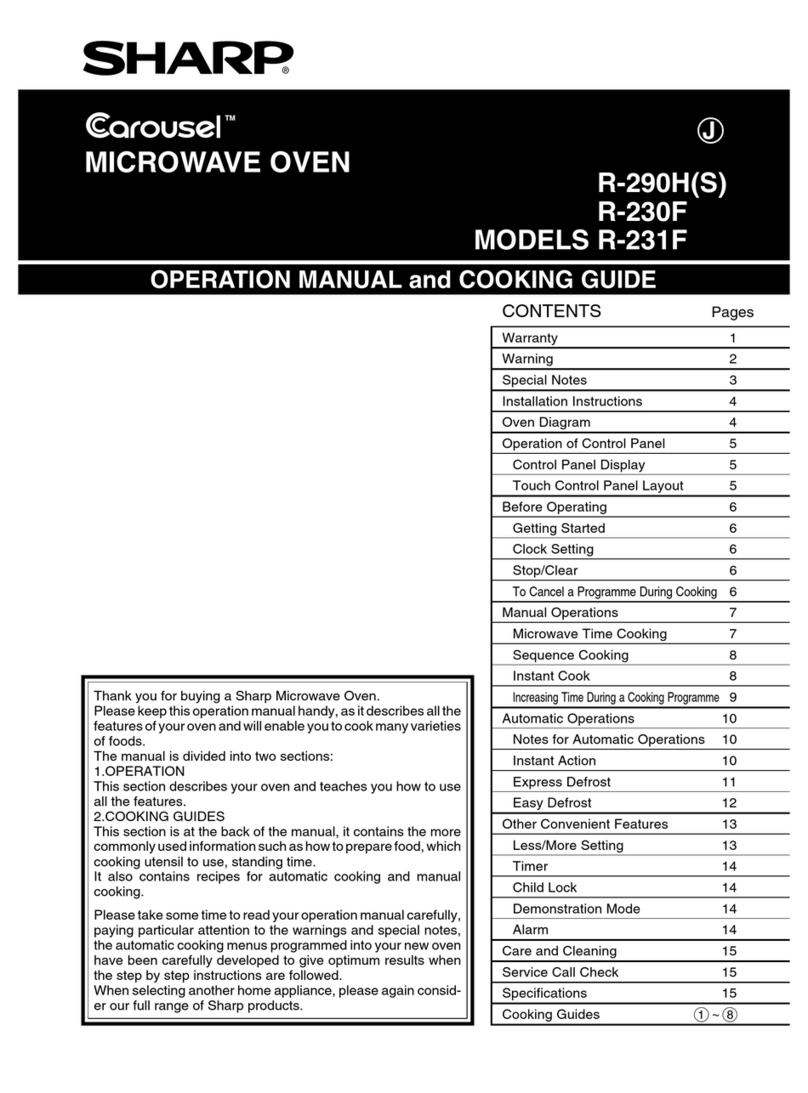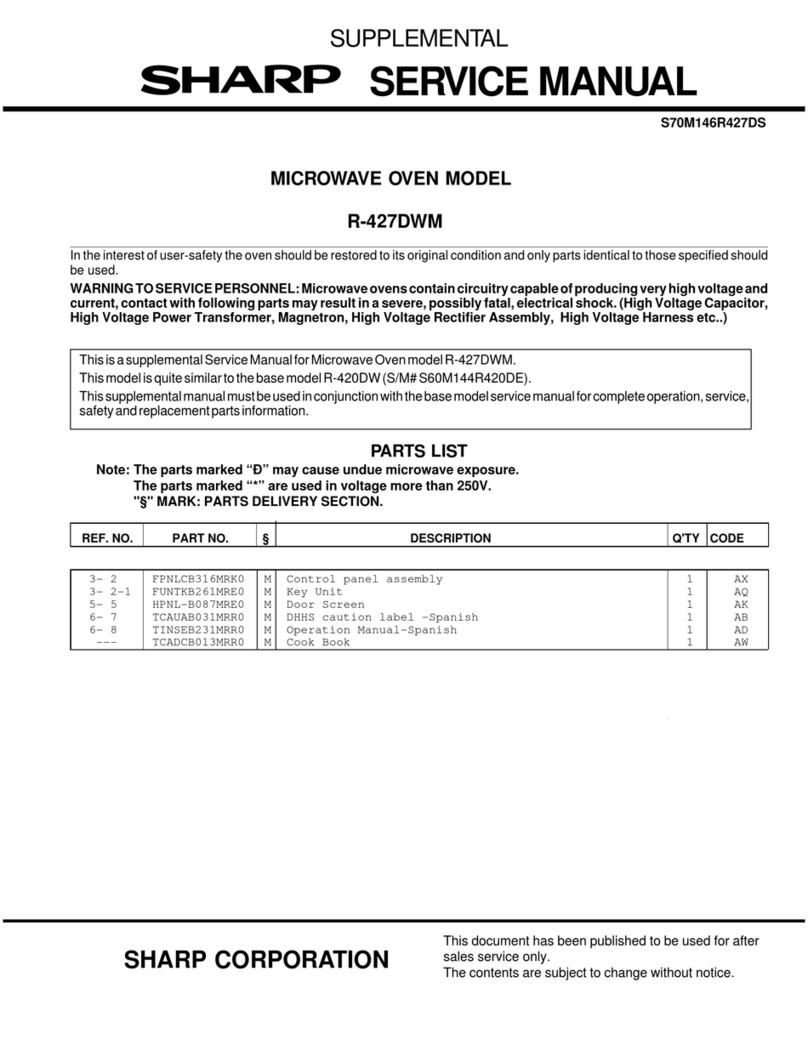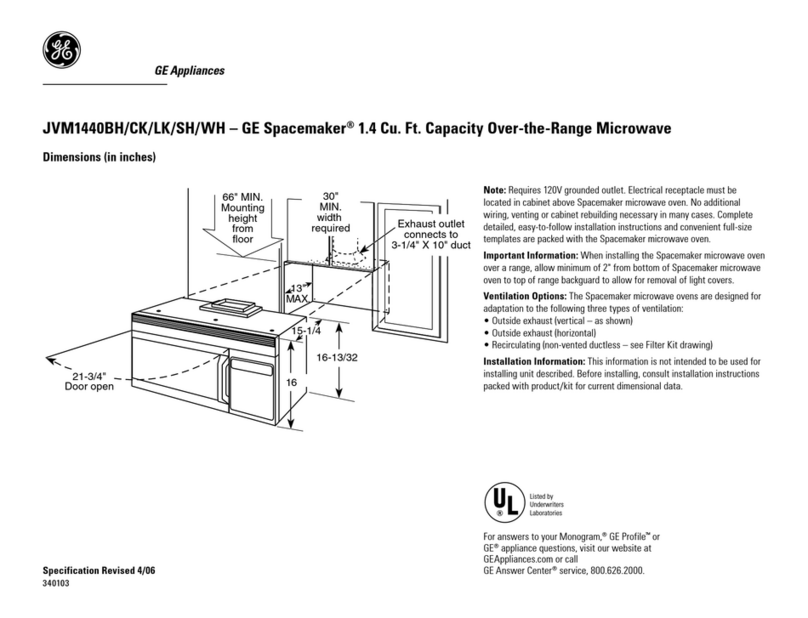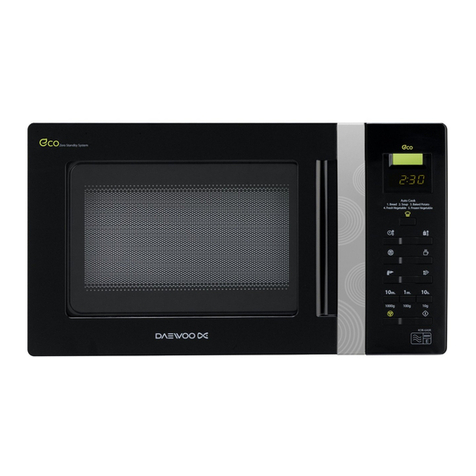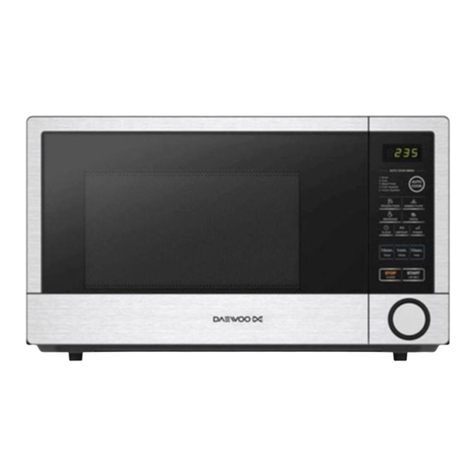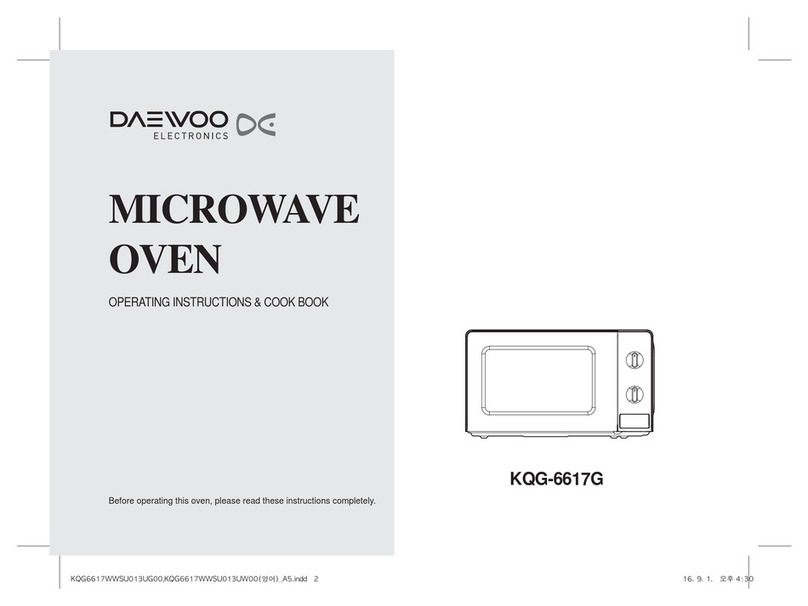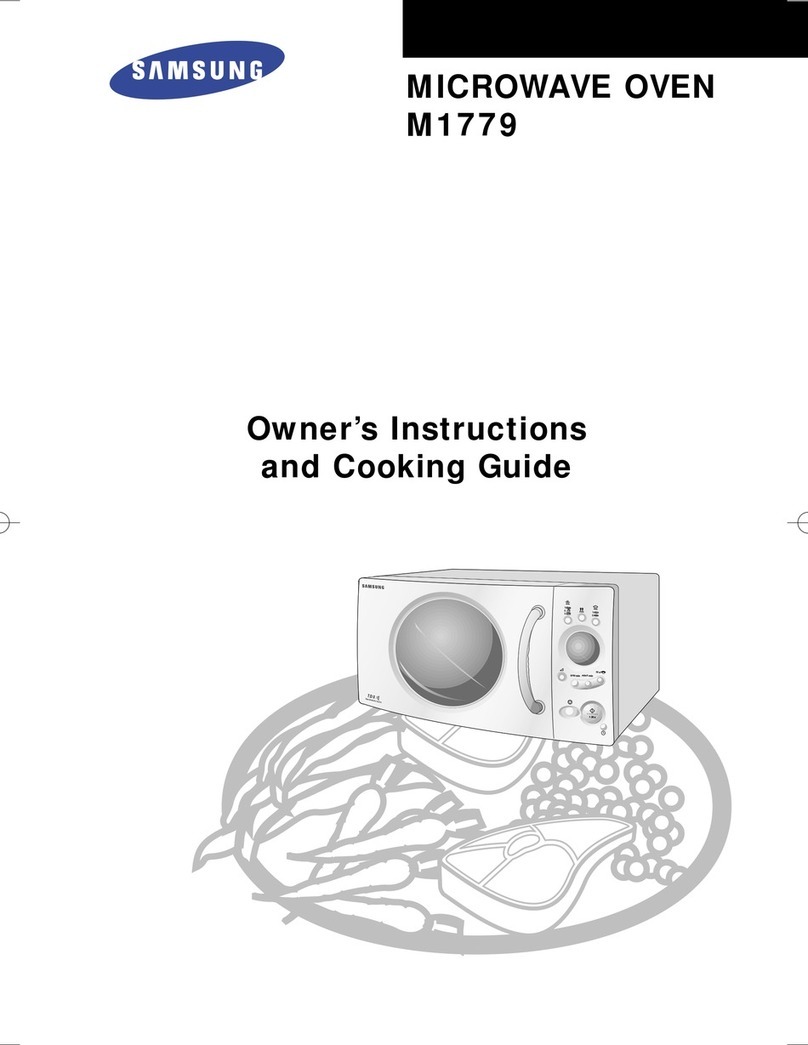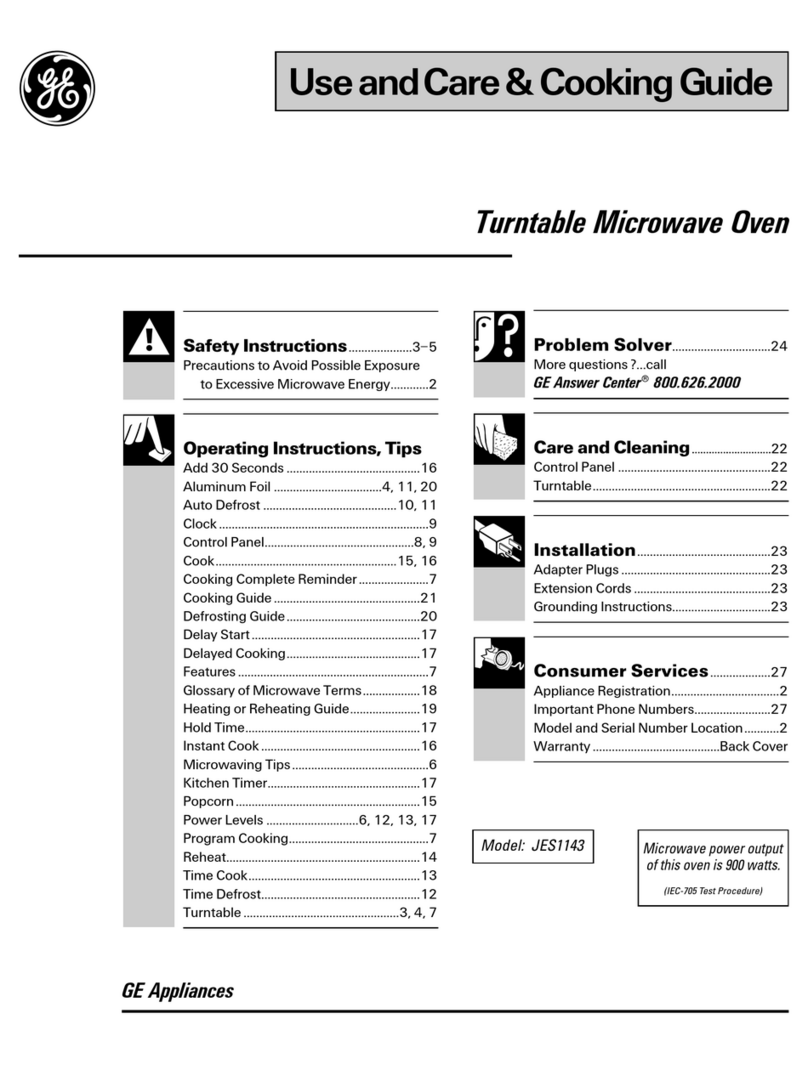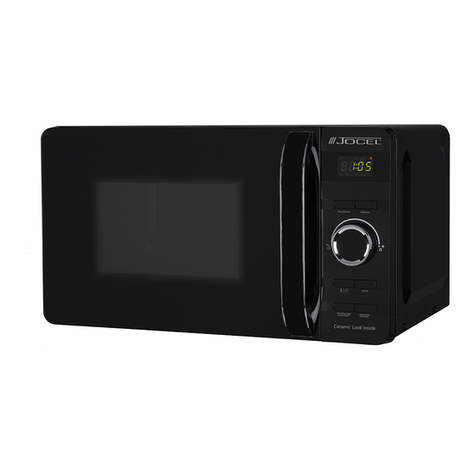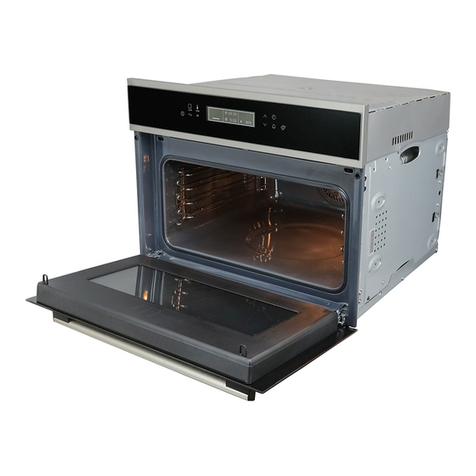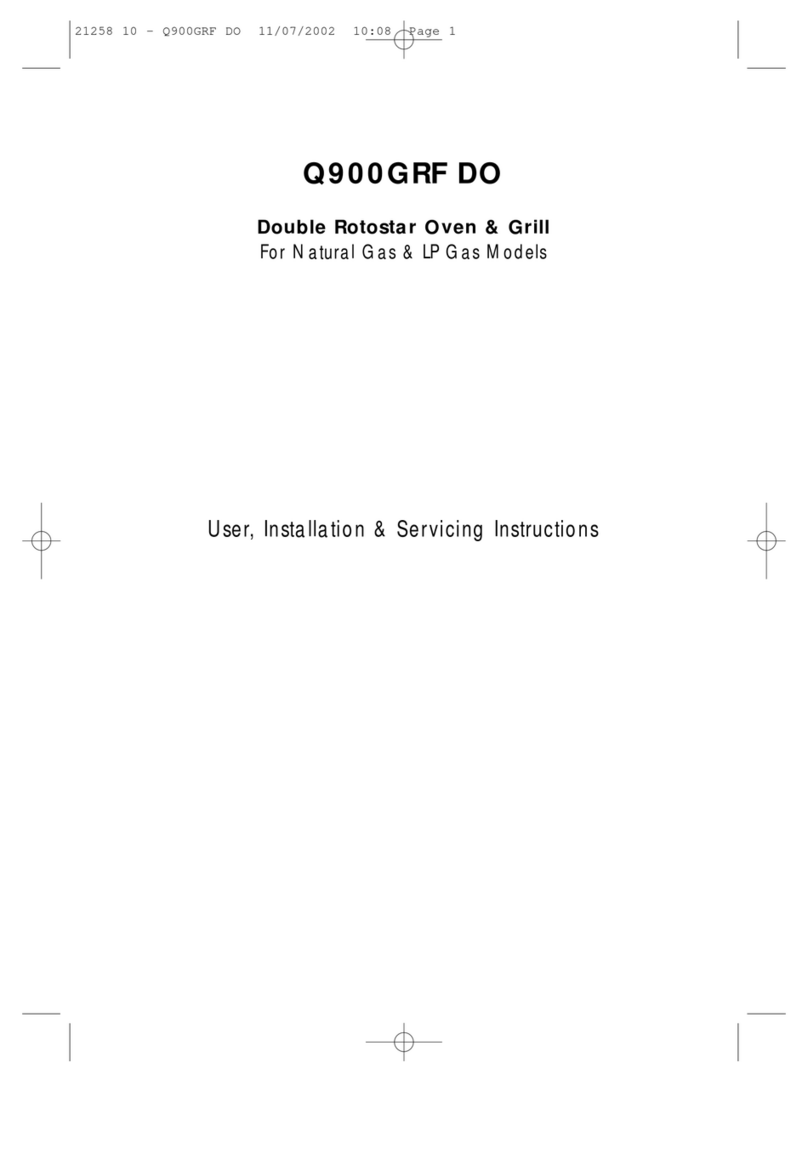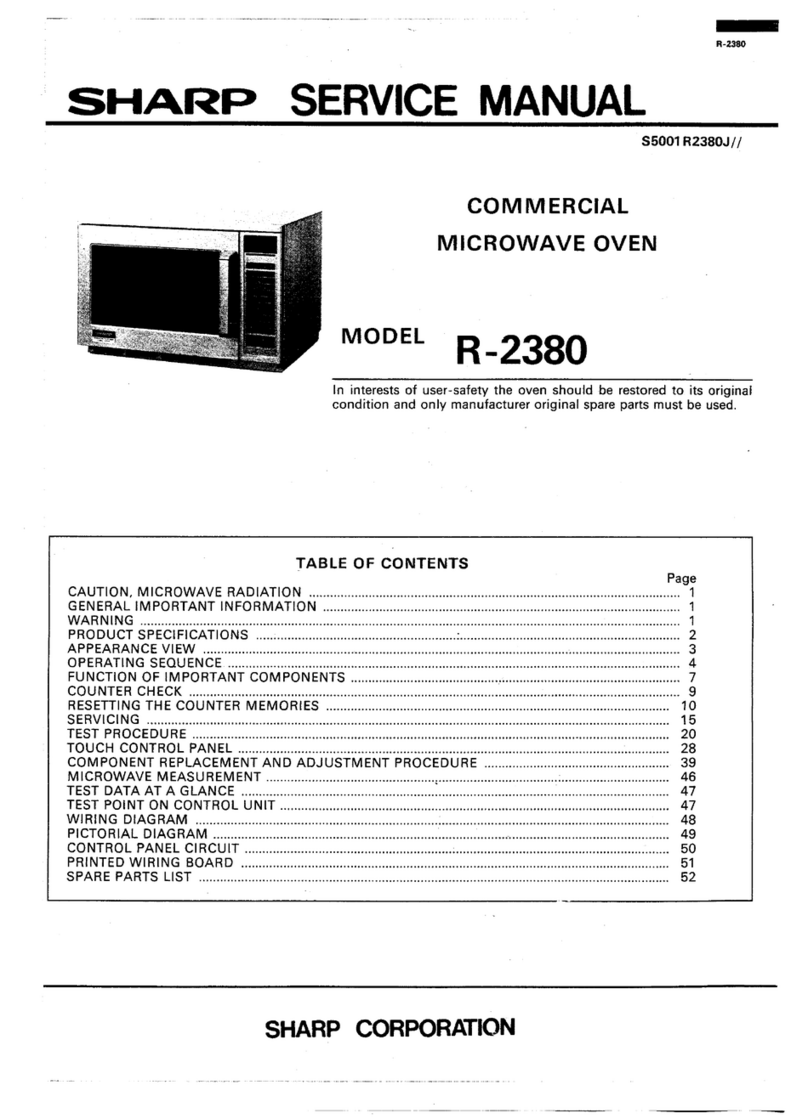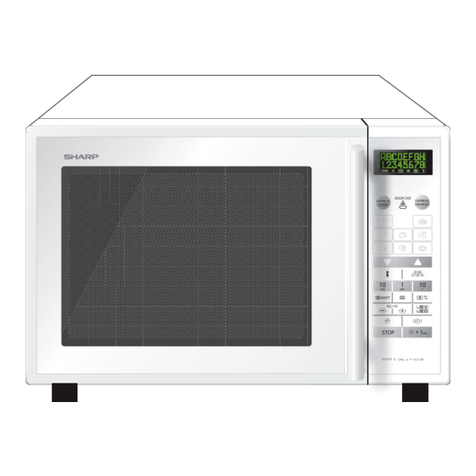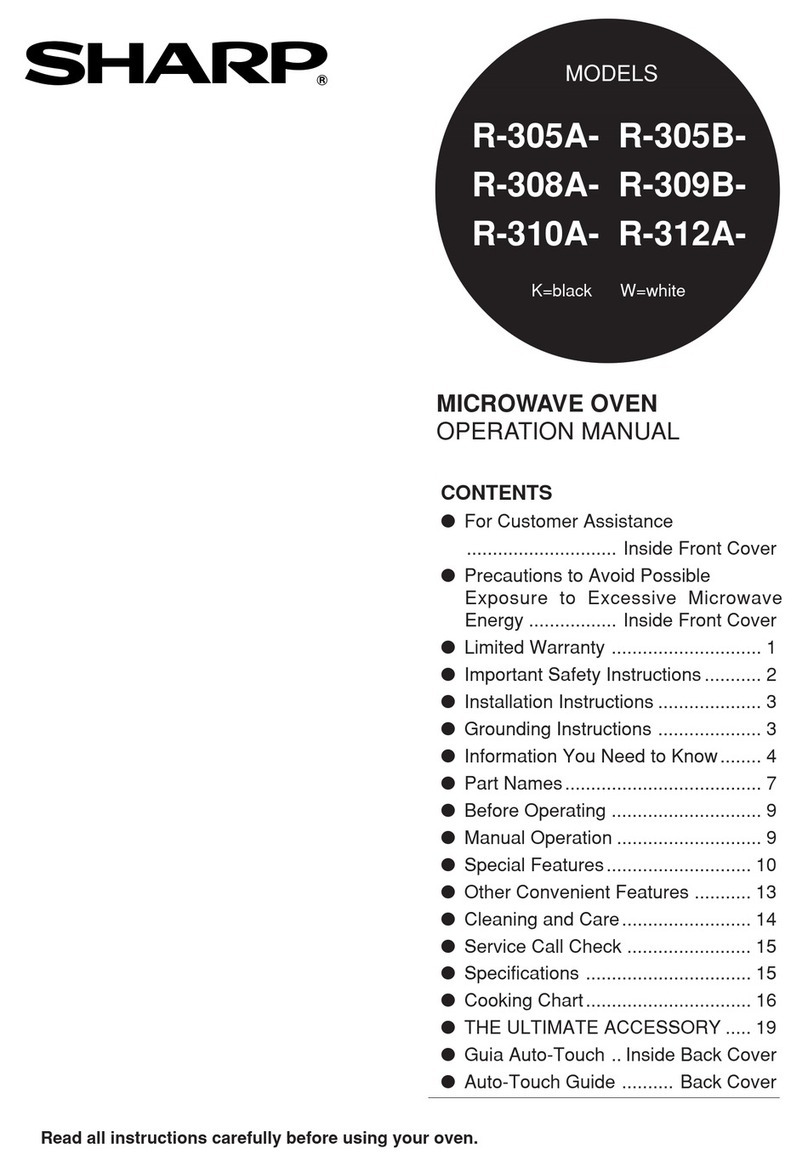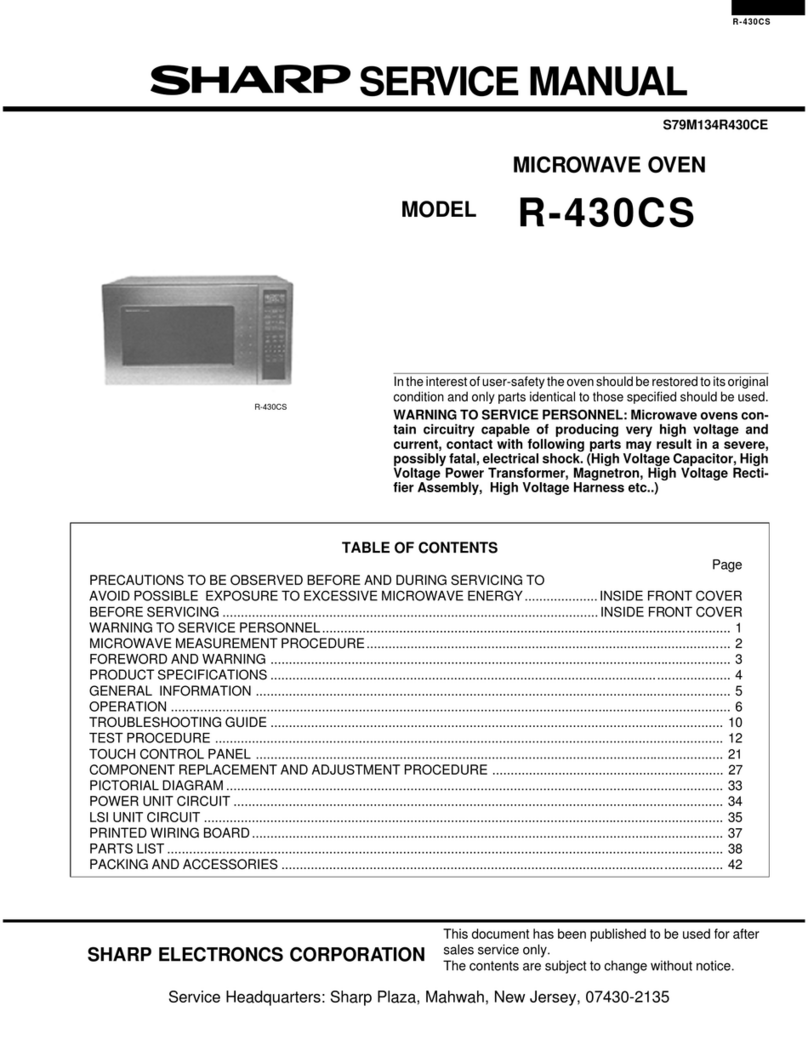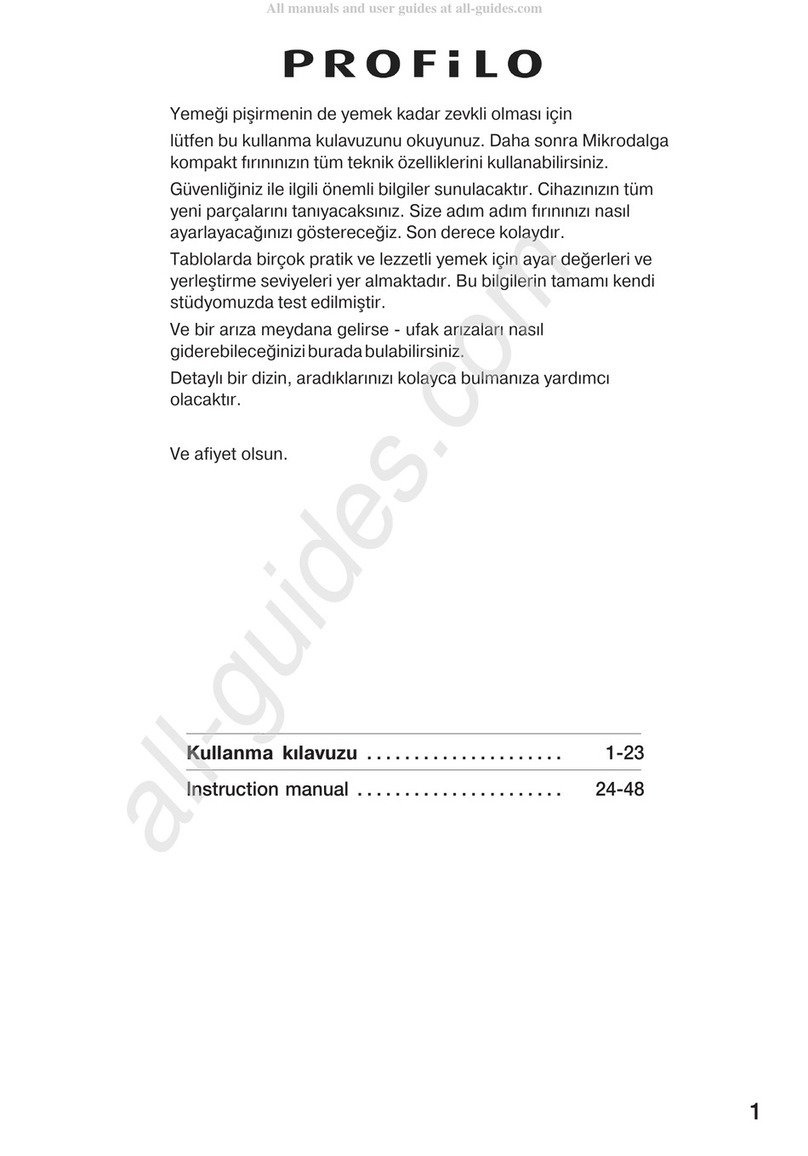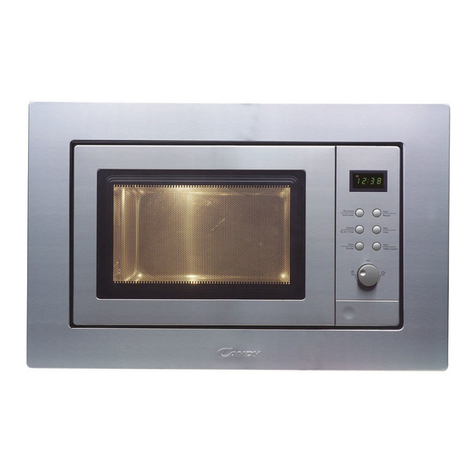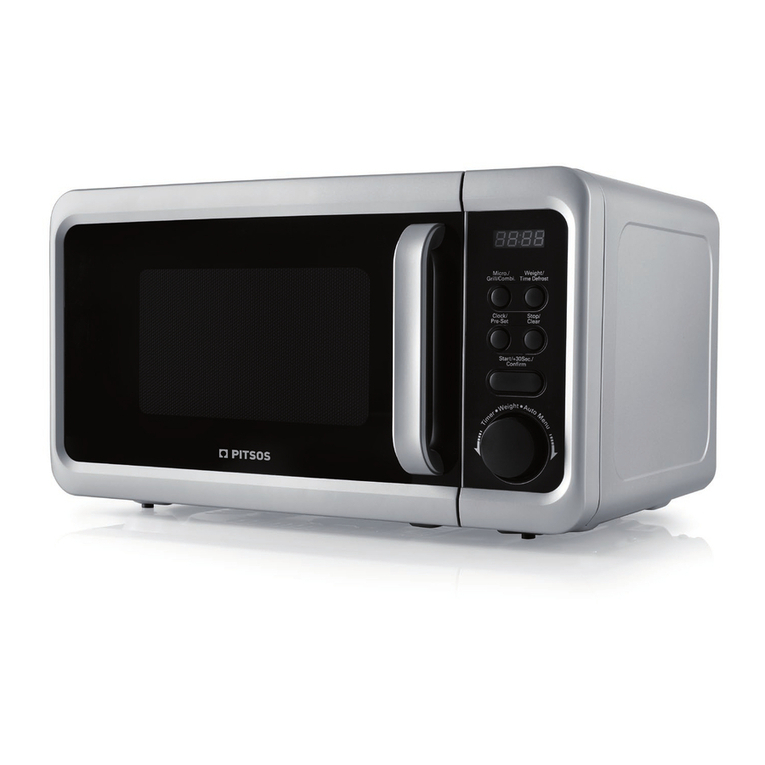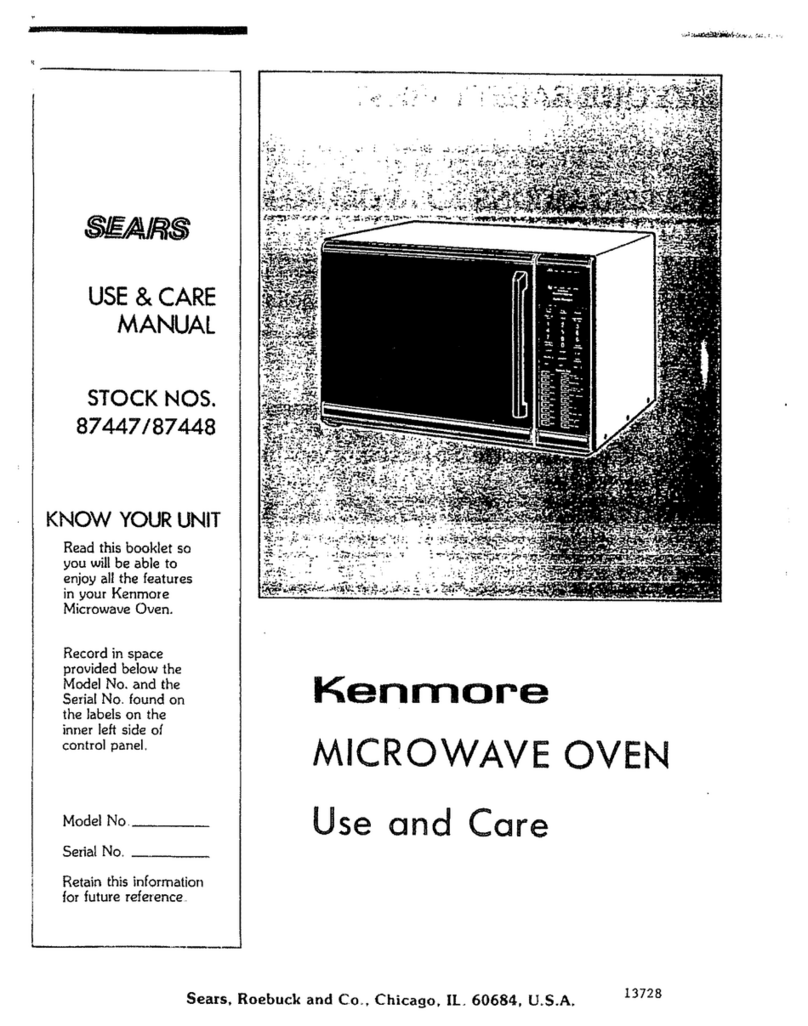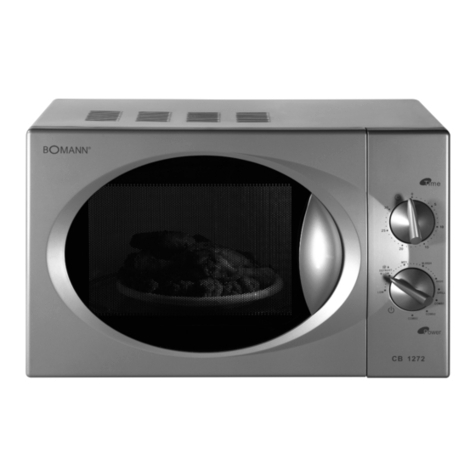7
R-1405
R-1406
OPERATION
DESCRIPTION OF OPERATING SEQUENCE
Thefollowingisadescriptionofcomponentfunctionsduring
ovenoperation.
OFF CONDITION
Closing the door activates the door sensing switch and
primaryinterlockswitch.(Inthiscondition,themonitorswitch
contactsareopened.)
When oven is plugged in, 120 volts A.C. is supplied to the
controlunit.(FigureO-1).
1. The display will show flashing "88 : 88".
To set any program or set the clock, you must first
touch the STOP/CLEAR button. The display will clear,
and " : " will appear .
COOKING CONDITION
ProgramdesiredcookingtimetouchingtheNUMBERpads.
WhentheSTARTbuttonistouched,thefollowingoperations
occur:
1. The contacts of relays are closed and components
connected to the relays are turned on as follows.
(Fordetails, referto FigureO-2)
RELAY CONNECTEDCOMPONENTS
RY1 Oven lamp / Fan motor / Turntable motor
RY2 Powertransformer
RY3,RY4 Hoodfanmotor
RY5,RY6 Hoodlamp
2. 120 volts A.C. is supplied to the primary winding of the
powertransformerandisconvertedtoabout3.3voltsA.C.
output on the filament winding, and approximately 2000
volts A.C. on the high voltage winding.
3. Thefilamentwindingvoltageheatsthemagnetronfilament
andtheH.V.windingvoltageis senttoa voltagedoubler
circuit.
4. The microwave energy produced by the magnetron is
channelled through the waveguide into the cavity feed-
box, and then into the cavity where the food is placed to
becooked.
5. Upon completion of the cooking time, the power
transformer, oven lamp, etc. are turned off, and the
generationofmicrowaveenergyisstopped.Theovenwill
revert to the OFF condition.
6. When the door is opened during a cook cycle, monitor
switch, door sensing switch, primary interlock switch,
relay (RY1) and secondary interlock relay (RY2) are
activated with the following results. The circuits to the
cooling fan motor, the turntable motor, and the high
voltage components are de-energized, the oven lamp
remainson,andthedigitalread-outdisplaysthetimestill
remaining in the cook cycle when the door was opened.
7. Themonitorswitchiselectricallymonitoringtheoperation
of the primary interlock switch and secondary interlock
relay(RY2)andismechanicallyassociatedwiththedoor
so that it will function in the following sequence.
(1) When the door opens from a closed position, the
secondaryinterlockrelay(RY2)andprimaryinterlock
switchopentheir contacts.Andcontactsoftherelay
(RY1) remains closed. Then the monitor switch
contacts close.
(2) When the door is closed from the open position, the
monitor switch contacts first open, and then the
contacts of the primary interlock switch and door
sensingswitchclose.Andcontactsoftherelay(RY1)
open.
Iftheprimaryinterlockswitchand secondaryinterlockrelay
(RY2)failwiththeircontactsclosedwhenthedoorisopened,
the closing of the monitor switch contacts will form a short
circuit through the monitor fuse, primary interlock switch,
relay(RY1)andsecondaryinterlockrelay(RY2),causingthe
monitor fuse to blow.
POWER LEVEL P-0 TO P-90 COOKING
WhenVariableCookingPowerisprogrammed,the120volts
A.C. is supplied to the power transformer intermittently
throughthecontactsofrelay(RY2)whichisoperatedbythe
controlunitwithin an interval second time base. Microwave
poweroperation is as follows:
VARI-MODE ON TIME OFF TIME
Power10(P-HI) 32 sec. 0 sec.
(100%power)
Power9(P-90) 30 sec. 2 sec.
(approx.90%power)
Power8(P-80) 26 sec. 6 sec.
(approx.80%power)
Power7(P-70) 24 sec. 8 sec.
(approx.70%power)
Power6(P-60) 22 sec. 10 sec.
(approx.60%power)
Power5(P-50) 18 sec. 14 sec.
(approx.50%power)
Power4(P-40) 16 sec. 16 sec.
(approx.40%power)
Power3(P-30) 12 sec. 20 sec.
(approx.30%power)
Power2(P-20) 8 sec. 24 sec.
(approx.20%power)
Power1(P-10) 6 sec. 26 sec.
(approx.10%power)
Power0(P-0) 0 sec. 32 sec.
(0%power)
Note: TheON/OFFtimeratiodoesnotcorrespondwiththe
percentageofmicrowavepower,becauseapprox.3
seconds are needed for heating of the magnetron
filament.

